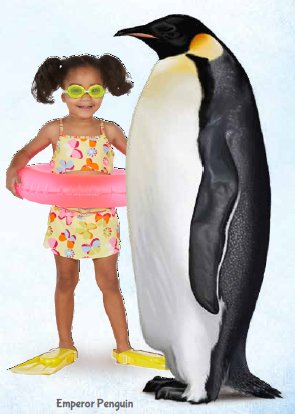Designed to Swim
Denis Luyten, Public domain, via Wikimedia Commons
on January 1, 2015




No matter how many hours you stare up at the clouds, you’ll never see a formation of penguins flying overhead. They use their wings for another purpose. Their uniquely designed feathers, bones, and muscles enable them to “fly” through the cold waters of the Southern Ocean.

Macaroni Penguin, Galápagos Penguin and Gentoo Penguin

Emperor Penguin: Did you know that they can grow as tall as 4 feet (1.2 m)?
Related Downloads
Underwater Flight
PDF DownloadDesigned Not to Fly
This issue shares some of the amazing designs of flightless birds.
Browse Kids IssueRecommended Resources
- © 2025 Answers in Genesis
- Privacy Policy
- Contact
- About


